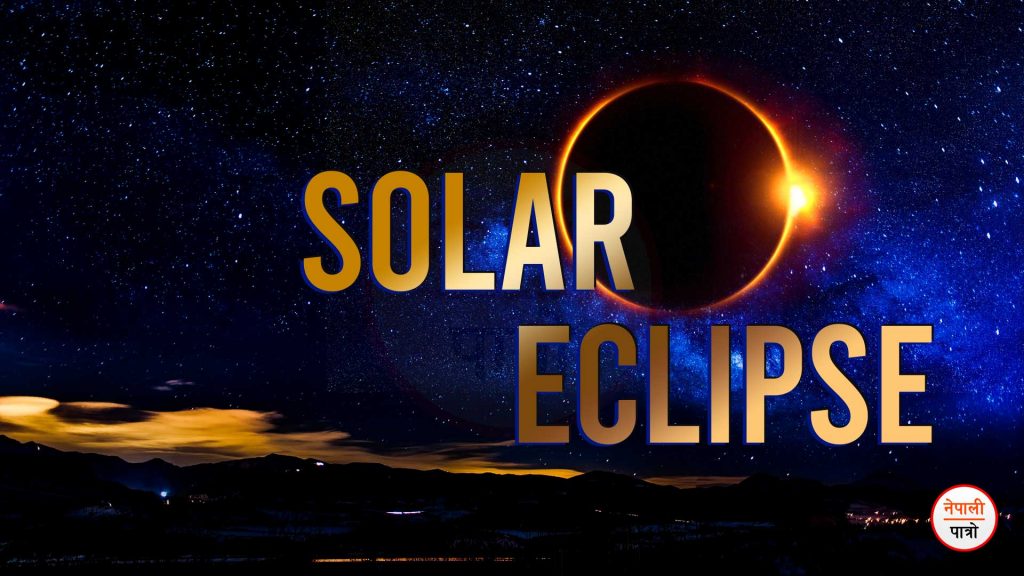
Solar Eclipse not seen from Nepal.
A Solar Eclipse is taking place in some parts of the southern hemisphere on Saturday, Baisakh 17. This is the first eclipse of the New Year 2079. This partial solar eclipse on April 30 will be visible only in the southwestern part of South America, the South Pacific, Atlantic Ocean, and Antarctica.
The eclipse will start at 12:30 on Saturday night according to Nepali time and it will end at 4:22 in the morning. The total duration of the eclipse will be 3 hours and 52 minutes. The eclipse will not be visible from Nepal, and India, including Australia, Europe, and North America. In a religious society, there is a provision of following some practical prohibitions and Sutak during the eclipse. However, according to the scriptures, during an invisible eclipse, those prohibitions do not have to be observed.
How does Eclipse take place?
An eclipse occurs when a portion of the Earth is engulfed in a shadow cast by the Moon which will fully or partially block the sunlight. That is, the act of the sun or moon being blocked by another planet’s image. A lunar eclipse occurs when the sun’s image is blocked by the moon, while a solar eclipse occurs when the moon is between the sun and earth casting its shadow. The condition where the whole planet’s image is blocked by the other planet is called Khagras and the condition where only the partial part is blocked is called Partial eclipse.
In practice, the word eclipse is used only when the shadow is made in the sun and moon, not including those made by other planetary bodies like Mars, Mercury, etc. As the earth orbits, the sun and the moon orbit the earth, sometimes the shadow of the earth falls on the moon and sometimes the shadow of the moon falls on the earth. Hence, a lunar eclipse is seen when the shadow of the earth falls on the moon and a solar eclipse is seen when the shadow of the moon falls on the earth.
When an eclipse occurs, the sun, the earth, and the moon come together in a single line, or like three points of the same line. This condition is possible only on the new moon (ausi) and full moon. The solar eclipse occurs on the new moon and the lunar eclipse on the full moon according to the conditions of those heavenly bodies. When a solar eclipse occurs, the moon reaches in between the earth and the sun, and the sun’s image appears to be blocked from the earth’s surface. When viewed from the earth, eclipses occur when the moon and sun are in the same line. The fast-moving moon usually starts blocking from the west side of the solar system like a cloud and exits towards the east, so the touch of a solar eclipse is from the west side and finishes from the east side. A solar eclipse is seen differently when viewed from different places. Therefore, while a solar eclipse is taking place in one place, it is not visible from another.